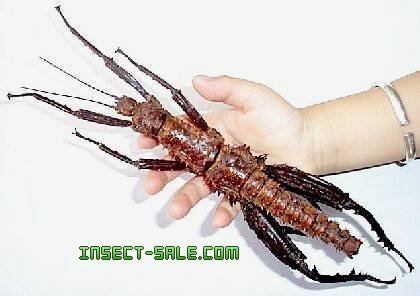Superfamily Anareolatae Rank Species | Suborder Verophasmatodea Higher classification Eurycantha | |
 | ||
Similar Eurycantha, Phasmids, Insect, Phasmatidae, Ctenomorphodes | ||
Eat eurycantha horrida from absinth very horrible
Eurycantha horrida, the thorny devil walking stick, is a species belonging to the stick insects (order Phasmatodea) and to the family Phasmatidae.
Contents
- Eat eurycantha horrida from absinth very horrible
- Description
- Distribution and habitat
- Life cycle
- References
Description
Eurycantha horrida can reach a length of about 12 centimetres (4.7 in) in males, of about 14 centimetres (5.5 in) in females. The body color ranges from pale green to brown. The young insects are glossy greenish. These ground-dwelling stick insects resemble bark or rotten wood. They have numerous small spines on their body and on their hind legs. Both sexes are wingless and look very similar. They exhibit the sexual dimorphism of many phasmids, as the males are darker, smaller and thinner and have enlarged hind leg femurs with a curved spine or thorn on the underneath side. Females are also brighter than the males and have a larger abdomen tipped with a beak-shaped ovipositor with which they lay the eggs in damp soil.
Distribution and habitat
This species occurs in Papua New Guinea. It can be found in tropical rainforests in trees, shrubs and ground litter.
Life cycle
The eggs hatch after about 4 months. Young insects mature after about 5–6 molts in 4 to 6 months. Life expectancy from hatching to the death is of about 2 years. They are nocturnal and they feed on a wide range of plants, mainly on leaves of Rosaceae species (blackberry, raspberry, wild rose, hawthorn, cherry, hawthorn, cotoneaster, etc.) but also on leaves of oak, beech, hazel, chestnut, eucalyptus, etc.
